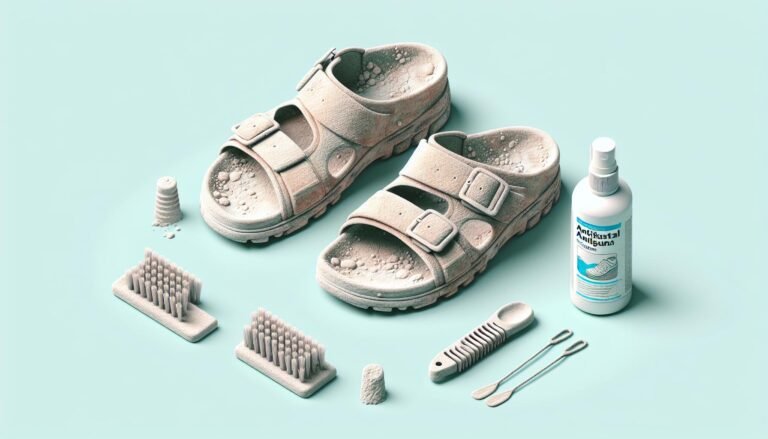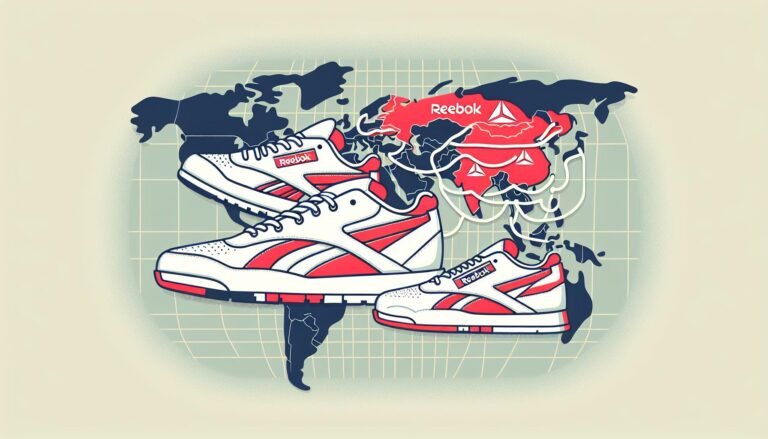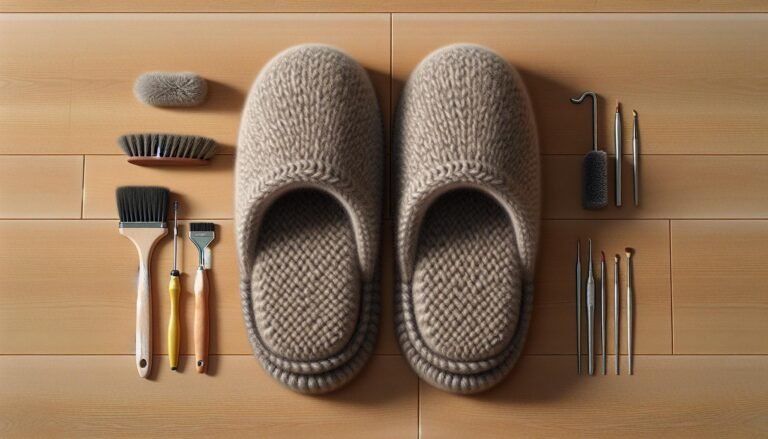Why Shoes Don’t Mimic Foot Shape: Design & Manufacture Limits
Ever wondered why your shoes look nothing like the outline of your feet? It’s a curious question that’s crossed my mind more than once. After all, we’re told that a good fit is key for comfort and foot health.
The truth is, there’s a blend of history, fashion, and function behind the shapes of shoes we see today. I’m diving into the reasons that might surprise you, from the evolution of footwear design to the demands of style and manufacturing.
So, if you’ve ever pondered this footwear conundrum, stay tuned. I’m about to unravel the mystery behind why shoes aren’t the perfect mirror image of our feet.
The evolution of footwear design
When I delve into the evolution of footwear design, it’s clear that early shoes were all about protection and durability. Ancient footwear was often made from tough materials available in the environment, like animal hide or plant fibers, which were more about utility than contouring the exact shape of the foot.
As civilizations advanced, so did shoe design. During the Middle Ages, for example, Europe saw the rise of pointed shoes, or poulaines. Far from being foot-shaped, these were a fashion statement among the wealthy, symbolizing status rather than offering comfort or functionality. It wasn’t just Europe, either. In China, the painful practice of foot binding shaped both the feet and the shoes worn by women, reflecting a societal preference that overrode natural foot shape.
The industrial revolution brought about mass production, and with it, the standardization of shoe sizes. This shift meant manufacturers focused on creating shoes that would fit an average foot, rather than tailoring each shoe to the individual. My research shows that this trend continues today in most mainstream shoe manufacturing.
Modern athletic shoes have morphed dramatically from their predecessors. The sneaker phenomenon started with a rubber sole’s ability to provide grip and decreased noise, which was quickly adopted in the early 20th century for various sports. This technological leap emphasized performance over the natural shape of the foot, although recent innovations strive to blend both aspects.
A shift is noticeable in recent years where ergonomic design is becoming a priority. Brands are increasingly focusing on foot health and the natural movement of the feet. In practice, this means that modern designs often incorporate a wider toe box that allows toes to spread, and flexible materials that move with the foot’s natural dynamics. Despite this, shoes that completely mimic the foot’s outline remain comparatively rare in the mainstream market due to persistent aesthetic preferences and production considerations.

Historical influences on shoe shapes
My exploration of shoe evolution has led me to understand that the aesthetics of footwear have been heavily influenced by cultural trends and historical events. I’ve found that historical figures and royalty have had a significant impact on shoe shapes. For example, in the 16th century, pointed shoes called “poulaines” became popular among European nobility. Their exaggerated length was a status symbol, despite not fitting the natural shape of the foot.
Moving forward, during the Victorian era, shoes with buttoned side closings and high heels became symbols of elegance and social standing. This trend veered away from comfort and natural foot contours in favor of style and societal expectations. The materials used during this period often lacked flexibility, forcing shoemakers to sacrifice ergonomic design.
Here’s an interesting fact: The Industrial Revolution was a turning point that standardized shoe sizes. This was driven by mass production techniques, which created a preference for uniform shapes that didn’t necessarily match the foot’s anatomy.
- Antique shoes were bespoke, crafted to fit the foot of the wearer.
- Post-Industrial Revolution footwear adopted generalized sizing, affecting the shape.
| Era | Shoe Characteristic | Influence |
|---|---|---|
| 16th Century | Pointed “Poulaines” | European Nobility |
| Victorian | Buttoned & High-Heeled | Elegance & Social Standing |
| Industrial | Standardized Sizes | Mass Production |
The shift to a one-size-fits-all model reflected the economical concerns over individualized comfort. This trend persisted throughout the 19th and 20th centuries, with fashion trends often dictating the shape of shoes, rather than the anatomy of the foot.
Athletic footwear, which came about in the late 20th century, did focus more on ergonomic design, but even then, the emphasis was on performance enhancement rather than a true representation of foot shape.
As society’s understanding of body dynamics and health continues to evolve, so does the design of shoes. Yet, the influence of historical design philosophies has left a lasting imprint on the way shoes are shaped today. I’m intrigued to see how modern concerns about health and comfort might alter these inherited design tendencies.
The role of fashion in shoe design
Fashion’s grip on shoe design can’t be understated. Historically, it’s wielded immense power over how shoes are shaped, often valuing aesthetics over comfort or the natural anatomy of the foot. I’ve seen firsthand how fashionistas and designers, season after season, introduce bold styles that quickly become the rage, from the vertiginous stilettos of the 50s to the sleek minimalist sneakers that reign today.
Designer labels have long been influential in dictating the shapes that fill shop displays. High-end fashion houses craft shoes that embody their brand’s ideology, sometimes prioritizing form and not function. It’s not just about looking good; these shoes serve as a symbol of status and taste. For many, the allure of designer footwear is irresistible, even if the shapes are far removed from the natural curves and contours of a foot.
Runways and fashion shows have proven to be potent launch pads for shoe trends that often place originality and artistic expression above practicality. I’ve watched avant-garde designers unveil footwear that defies conventional shapes, pushing the boundaries of what’s considered wearable. These designs can be evocative and thought-provoking, enhancing the narrative of fashion as an art form.
Yet, as trends change with the wind, consumer behavior also plays a role. People’s cravings for the latest styles mean that there’s always a market for non-ergonomic shoe designs. The ever-present need to stand out or to blend in with a certain group drives demand for these fashionable creations.
Social media and celebrity influence further amplify fashion’s impact, often setting off waves of demand for specific shoe shapes after a single post or appearance on a red carpet. As these trends go viral, retailers and manufacturers rush to replicate the styles, reinforcing the cycle where fashion trumps the functional design of footwear that follows the foot’s natural shape.
With this pattern ingrained in the market, the question arises: will there ever be a point where fashion and foot anatomy align perfectly? As I delve deeper into the world of footwear, it’s clear that the push for this harmonization is gaining traction, with modern consumers increasingly valuing comfort alongside style. The dynamic relationship between fashion and practicality in shoe design is evolving, yet the historical precedence of fashion over function remains evident.
Functionality and comfort considerations
While historical trends have heavily influenced shoe design, there’s growing awareness around the importance of functionality and comfort. I’m finding more brands are integrating ergonomic features, aiming to provide a balance between style and the well-being of the wearer’s feet. The anatomy of the human foot is complex, with a unique shape and structure necessitating relaxed fits that allow for natural foot movement.
Evolving from fashion-driven designs, some contemporary shoe models focus on:
- Arch support to prevent discomfort and injury
- Wider toe boxes that accommodate the natural spread of toes
- Flexible materials that mimic the foot’s movement
- Breathable fabrics to maintain hygiene and comfort
These considerations reflect consumers’ demands for daily wear shoes that can endure long hours of standing or walking without compromising on aesthetics. The fitness and sports industry, in particular, emphasizes biomechanics and shoe function. With advanced technology, companies create footwear that adapts to various activities, terrain, and individual foot shapes.
The industry’s response to the comfort movement also sees an influx of orthopedic and therapeutic shoe options. Once considered unattractive, these styles are being redesigned with a sharper eye on fashion, proving that comfort need not sacrifice style. My experience with the latest shoe trends shows that the incorporation of memory foam insoles, gel padding, and shock-absorbing outsoles demonstrates the shift towards foot-friendly features.
With the market expanding, there’s a noticeable influence of user feedback in design processes. Shoe buyers frequently highlight the significance of comfort on social media platforms, influencing both small businesses and giant manufacturers to pay closer attention to the functional aspects of footwear. The result is an evolving landscape where the natural shape of the foot is gaining the spotlight, slowly altering the course of shoemaking history.
Manufacturing limitations and constraints
In exploring why shoes often aren’t shaped like feet, it’s important to consider the role of manufacturing limitations. Traditional shoe manufacturing processes have been developed for mass production, aiming for consistency and cost-effectiveness. While this approach keeps prices down, it often means using standard shoe lasts—the mechanical form shaped like a human foot used by shoemakers—which may not accurately reflect the variances found in actual feet. The use of these lasts is a key factor in why many shoes have a uniform shape, as opposed to an individualized, foot-like contour.
Moreover, shoemaking involves a substantial investment in equipment that’s designed around these conventional lasts. Manufacturers must consider economies of scale, where producing a wide variety of shapes to match the myriad of foot forms would significantly increase costs. Investing in new, more adaptable machinery would be a huge financial risk, a deterrent for many companies, particularly when the existing system remains profitable.
Material selection also plays a part in the constraints of shoe design. The most commonly used materials have to be durable, affordable, and easy to work with. This means certain compromises are made, often in the flexibility and the ability to mold materials to a true foot shape. While new materials, such as memory foams and advanced polymers, can offer a closer approximation of foot shape, they come with increased production costs and may require new manufacturing techniques that are not yet widely adopted in the industry.
In addition, the assembly line process itself, which is the backbone of the footwear manufacturing industry, poses its own set of challenges when it comes to producing foot-shaped shoes. Each step in the production line is designed to handle a specific task with maximum efficiency. Introducing a more complex or diverse range of shapes could disrupt this flow, leading to longer production times and, again, increased costs.
In short, while the market is embracing the demand for footwear that fits better and supports our feet, the shift towards shoes shaped like actual feet is constrained by historical manufacturing practices, cost considerations, and material choices. The intersection of these factors continues to influence the shape and design of shoes, inevitably impacting the degree to which they can conform to the unique contours of individual feet.
Conclusion
I’ve taken you through the evolution of shoe design and the manufacturing challenges that have shaped the footwear industry. It’s clear that while we crave shoes that mimic the natural form of our feet, practicality and economics often take precedence. I’m hopeful that as technology advances, we’ll see a shift towards more foot-friendly designs that don’t sacrifice style for comfort. Until then, we’ll continue to navigate the balance between the shoes we have and the shoes our feet truly deserve.








[…] Moccasins, traditionally made from soft leathers such as deerskin, are a distinctive type of footwear with origins deeply rooted in the history of many Indigenous peoples of North America. They are characterized by a sole fashioned from the same piece of leather that extends to the sides of the foot, often featuring additional leather paneling called the vamp. This construction method, which predates the introduction of modern footwear, provides a unique combination of comfort and simplicity, adapting well to the contours of the foot. […]
[…] with adequate arch support and a flexible sole can significantly mitigate knee discomfort. These shoes mimic our foot’s natural movement, promoting better alignment of the knee joints and reducing stress. This […]
[…] on. Opt for adjustable straps or buckles that allow you to customize the fit according to your foot’s shape and […]